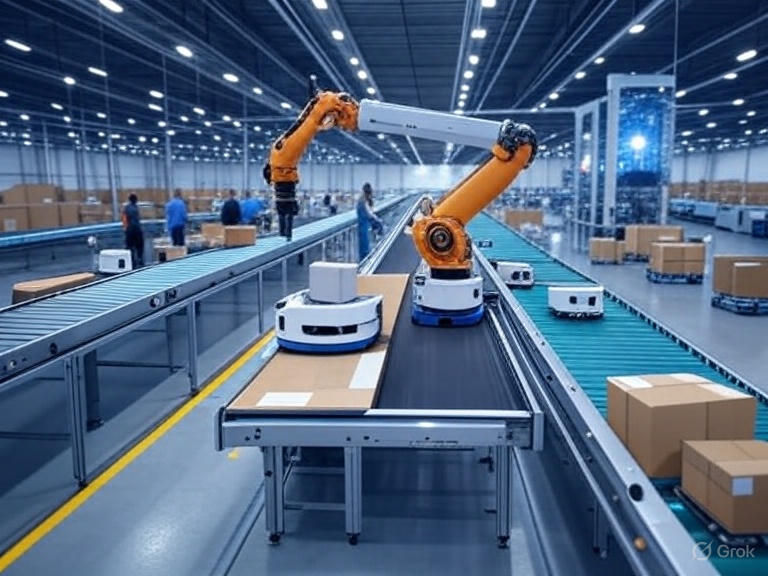Industrial IoT Meets Enterprise MFT: Best Practices for Secure Data Transfer in Manufacturing
- David Heath
- Jul 8
- 4 min read

The convergence of Industrial Internet of Things (IIoT) and Enterprise Managed File Transfer (MFT) is revolutionizing the manufacturing sector, particularly in industries like automotive and discrete manufacturing. This integration enables the seamless transfer of high-volume shop-floor data through secure and scalable pipelines into analytics clouds, driving efficiency, predictive maintenance, and real-time decision-making. By examining case studies from these industries, we can uncover the best practices that ensure data is not only transferred efficiently but also protected and scalable for future growth.
In the automotive manufacturing sector, the need for real-time data transfer is critical, especially in high-volume production environments. A notable example comes from a major automotive manufacturer that faced quality issues with paint application on vehicles. The problem was inconsistent paint quality between shifts, which required immediate attention. To address this, the company implemented an IIoT solution that connected shop-floor devices directly to a cloud-based analytics platform. This involved deploying edge computing technologies to process data closer to the source, reducing latency and ensuring that high-volume data from sensors and machines could be funneled securely into the cloud for analysis. The use of an industrial IoT platform, such as Telit’s deviceWISE, facilitated this process by orchestrating data from multiple devices and integrating it with enterprise systems. This approach not only resolved the paint quality issue but also demonstrated the importance of edge communication, where data is pre-processed at the edge before being sent to the cloud, ensuring scalability and minimizing bandwidth usage. Additionally, the platform’s ability to connect multiple facilities through a single interface highlighted its scalability, allowing for enterprise-wide data comparison and analysis.
Security is paramount in such data transfer pipelines. The automotive case study emphasized the use of native drivers and seamless integration with existing system architectures to ensure that data remained secure during transfer. This is crucial in environments where sensitive production data must be protected from theft or unauthorized access. Furthermore, the use of robust encryption and secure transmission protocols, as recommended by industry standards, ensures compliance with data privacy regulations while maintaining the integrity of the data.
Moving to discrete manufacturing, the Carpigiani case study provides a compelling example of how IIoT and MFT can be leveraged to monitor and maintain a global fleet of machines. Carpigiani, an Italian manufacturer of gourmet gelato machines, produces over 10,000 machines annually, with more than 8,000 connected to its Teorema system for remote monitoring and predictive maintenance. The company uses Telenor IoT’s Managed Connectivity solution, which employs embedded SIM cards connected to over 500 mobile networks globally. This setup ensures that high-volume data from each machine is securely transmitted to the Teorema cloud platform, where it is analyzed for predictive maintenance and service optimization. The solution’s scalability is evident in its ability to handle varying data volumes, even for small customers, while maintaining global connectivity. This case underscores the importance of flexible and scalable connectivity solutions that can adapt to the diverse needs of discrete manufacturing operations.
Another key best practice highlighted in both case studies is the role of collaboration across departments. In the automotive example, integrating IoT data with enterprise systems required coordination between business, operations, and security teams to ensure that the data transfer pipelines were both secure and scalable. Similarly, Carpigiani’s success with its Teorema4U service, an extended warranty program, relied on seamless integration of IoT data with customer service systems, which involved cross-functional teams to ensure the solution met both technical and business requirements.
The use of advanced connectivity technologies also plays a crucial role in these best practices. For instance, 5G technology offers high-speed, low-latency connectivity, making it ideal for transferring large volumes of data in real-time. In contrast, Low Power Wide Area Networks (LPWAN) are better suited for devices that require energy-efficient, long-range communication. Edge computing, as seen in both case studies, is another critical component, as it allows for local data processing, reducing the load on cloud infrastructure and enhancing overall efficiency.
Best Practice | Description | Example from Case Studies |
Edge Computing | Processes data locally to reduce latency and bandwidth usage | Automotive: Telit’s deviceWISE uses edge communication to pre-process data before cloud transfer |
Secure Connectivity | Uses encryption and managed connectivity for secure data transfer | Carpigiani: Telenor IoT’s solution with embedded SIMs ensures secure global data transfer |
Scalability | Supports multiple facilities and varying data volumes | Automotive: Connects multiple facilities via a single interface; Carpigiani: Handles data from 8,000+ machines |
Cross-Departmental Collaboration | Involves business, operations, and security teams for integration | Both cases required coordination to integrate IoT data with enterprise systems |
Advanced Connectivity | Utilizes 5G and LPWAN for efficient data transfer | Implied in both cases for high-speed and energy-efficient connectivity |
In conclusion, the integration of Industrial IoT and Enterprise MFT in manufacturing is not just about connecting devices; it’s about creating secure, scalable, and efficient data transfer pipelines that enable real-time analytics and decision-making. The automotive and discrete manufacturing case studies illustrate that best practices include leveraging edge computing for local processing, using managed connectivity solutions for global scalability, ensuring robust security through encryption and seamless integration, and fostering cross-departmental collaboration. As manufacturing continues to evolve, these practices will remain essential for companies looking to harness the full potential of IIoT while safeguarding their data and operations.
By David Heath
Listen to a podcast about this article on Spotify
Citations:







Comments